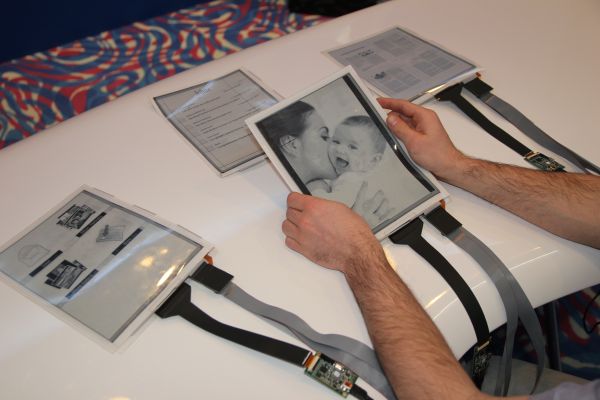A paper-thin flexible tablet computer
January 9, 2013

PaperTab (credit: Plastic Logic/Queen’s University)
A flexible paper computer developed at Queen’s University in collaboration with Plastic Logic and Intel Labs could one day revolutionize the way people work with tablets and computers.
The PaperTab tablet looks and feels just like a sheet of paper. However, it is fully interactive with a flexible, high-resolution 10.7” plastic display developed by Plastic Logic, a flexible touchscreen, and powered by the second generation Intel Core i5 Processor.
Instead of using several apps or windows on a single display, users have ten or more interactive displays or “PaperTabs”: one per app in use.
“Using several PaperTabs makes it much easier to work with multiple documents,” says Roel Vertegaal, Director of Queen’s University’s Human Media Lab. “Within five to ten years, most computers, from ultra-notebooks to tablets, will look and feel just like these sheets of printed color paper.”
For example, PaperTab’s intuitive interface allows a user to send a photo simply by tapping one PaperTab showing a draft email with another PaperTab showing the photo. The photo is then automatically attached to the draft email. The email is sent either by placing the PaperTab in an out tray, or by bending the top corner of the display.
Similarly, a larger drawing or display surface is created simply by placing two or more PaperTabs side by side. PaperTab thus emulates the natural handling of multiple sheets of paper by combining thin-film display, thin-film input and computing technologies through intuitive interaction design.
PaperTab can file and display thousands of paper documents, replacing the need for a computer monitor and stacks of papers or printouts. Unlike traditional tablets, PaperTabs keep track of their location relative to each other, and the user, providing a seamless experience across all apps, as if they were physical computer windows.
For example, when a PaperTab is placed outside of reaching distance it reverts to a thumbnail overview of a document, just like icons on a computer desktop. When picked up or touched a PaperTab switches back to a full screen page view, just like opening a window on a computer.
PaperTabs are lightweight and robust, so they can easily be tossed around on a desk while providing a magazine-like reading experience. By bending one side of the display, users can also navigate through pages like a magazine, without needing to press a button.
Plastic Logic and the Queen’s University’s Human Media Lab unveiled PaperLab at the International Consumer Electronics Show (CES 2013) in Las Vegas on January 8.